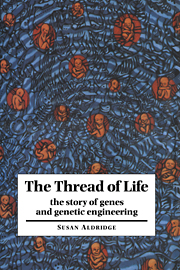8 - New genes for old
from PART II - Engineering genes
Published online by Cambridge University Press: 16 March 2010
Summary
Increasingly, medical research is dominated by DNA. The hunt is on for genes that can help to answer the really big questions, such as how does a single cell grow and develop into a complex body, and what really causes cells to grow into tumours sometimes. At the same time new DNA-based drugs and therapies are making their way from the research laboratory into the hospitals and general practitioners' surgeries.
Life, death and the cell
In California, there is a group of people who believe humans are meant to be immortal and that our bodies can last indefinitely if we only have the right psychological outlook! There is absolutely no scientific evidence for this, but the belief that the cells that make up our bodies are immortal was certainly once very widely accepted. Now our view of the life expectancy of cells has changed completely. According to the latest (and still controversial) research, the natural state of our cells is death, and only the constant prodding of genetic signals actually keeps them alive.
The myth of cell immortality originated with Nobel Prize winner Alexis Carrel, a French surgeon who was interested in organ transplantation and tissue culture. In 1912, he started to culture some cells from a chick's heart to see how long they would survive outside the animal's body. When they outgrew their culture vessel, they were divided up and transferred to new vessels – a process known as subculturing.
- Type
- Chapter
- Information
- The Thread of LifeThe Story of Genes and Genetic Engineering, pp. 165 - 180Publisher: Cambridge University PressPrint publication year: 1996



